Related Research Articles

Harum Scarum is a 1965 American musical comedy film starring Elvis Presley. It was shot on the original Cecil B. DeMille set from the film The King of Kings, with additional footage shot on location at the Iverson Movie Ranch in Chatsworth, Los Angeles. Some of the film was based on Rudolph Valentino's 1921 movie The Sheik.
Paradise is a 1982 Canadian adventure-romance film written and directed by Stuart Gillard. It stars Phoebe Cates, Willie Aames, and Tuvia Tavi. The original music score was composed by Paul Hoffert with the theme song written and produced by Joel Diamond and L. Russell Brown and sung by Phoebe Cates.
The concept of imagined geographies originated from Edward Said, particularly his work on critique on Orientalism. Imagined geographies refers to the perception of a space created through certain imagery, texts, and/or discourses. For Said, imagined does not mean to be false or made-up, but rather is used synonymous with perceived. Despite often being constructed on a national level, imagined geographies also occur domestically in nations and locally within regions, cities, etc.
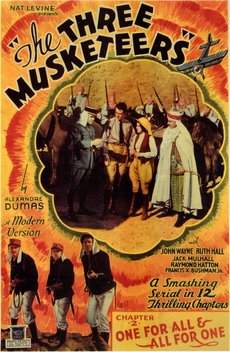
The Three Musketeers is a 1933 American pre-Code film serial directed by Armand Schaeffer and Colbert Clark, and produced by Nat Levine for Mascot Pictures. The film serial was very loosely based on Alexandre Dumas' 1844 novel The Three Musketeers, with the musketeers changed into three soldiers in the French Foreign Legion, and d'Artagnan being reconfigured as Lt. Tom Wayne, a pilot in the United States military.
Stereotypes of Arabs and Muslims in the United States have been presented in various forms by the mass media in the American culture. Stereotypical representations of Arabs are often manifested in a society's media, literature, theater and other creative expressions. These representations, which have been historically and predominantly negative, have adverse repercussions for Arab Americans and Muslims in daily interactions and in current events. In American textbooks, which theoretically should be less-creative expressions, similar negative and inaccurate stereotypes are also found for Arabs and Muslims.

Peace, Propaganda & the Promised Land is a 2004 American documentary film directed by Sut Jhally and Bathsheba Ratzkoff which—according to the film's official website—"provides a striking comparison of U.S. and international media coverage of the crisis in the Middle East, zeroing in on how structural distortions in U.S. coverage have reinforced false perceptions of the Israeli–Palestinian conflict" and which "analyzes and explains how—through the use of language, framing and context—the Israeli occupation of the West Bank and Gaza remains hidden in the news media". The film argues that the influence of pro-Israel media watchdog groups, such as CAMERA and Honest Reporting, has led to distorted and pro-Israel media reports. It features Noam Chomsky, Robert Jensen, Hanan Ashrawi, Sam Husseini, and Robert Fisk, among others.
Jack George Shaheen Jr. was an American writer and lecturer specializing in addressing racial and ethnic stereotypes. He authored Reel Bad Arabs, The TV Arab (1984) and Arab and Muslim Stereotyping in American Popular Culture (1997).
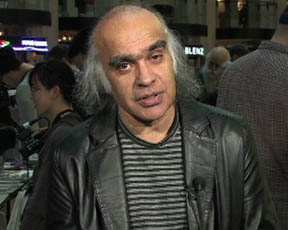
Sut Jhally is a professor of communication at the University of Massachusetts Amherst, whose work focuses on cultural studies, advertising, media, and consumption. He is the producer of more than 40 documentaries on media literacy topics and the founder and executive director of the Media Education Foundation.
Bathsheba Ratzkoff is a film director, producer, and editor.
Jacqueline Reem Salloum is a Palestinian/Syrian American artist and filmmaker. She is the director and editor of the award-winning film, Slingshot Hip Hop, the first feature-length documentary about the Palestinian Hip Hop scene which premiered at the Sundance Film Festival. Salloum directed and edited Planet of the Arabs, an experimental short on Hollywood’s negative depiction of Arabs and Muslims through the decades. Inspired by Dr. Jack Shaheen’s book, Reel Bad Arabs, the short film was a selection at the Sundance Film Festival and has also been exhibited in art galleries and museums globally.
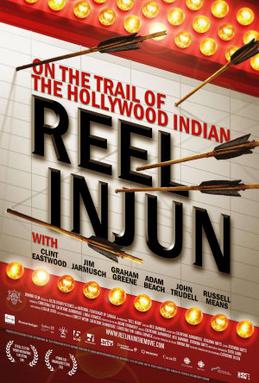
Reel Injun is a 2009 Canadian documentary film directed by Cree filmmaker Neil Diamond, Catherine Bainbridge, and Jeremiah Hayes that explores the portrayal of Native Americans in film. Reel Injun is illustrated with excerpts from classic and contemporary portrayals of Native people in Hollywood movies and interviews with filmmakers, actors and film historians, while director Diamond travels across the United States to visit iconic locations in motion picture as well as American Indian history.
Racism in early American film is the negative depiction of racial groups, racial stereotypes, and racist ideals in classical Hollywood cinema from the 1910s to the 1960s.
Killing Us Softly is an American documentary series by Jean Kilbourne, produced and distributed by the Media Education Foundation. First released in 1979 and since revised and updated three times, most recently in 2010, it focuses on images of women in advertising; in particular on gender stereotypes, the effects of advertising on women's self-image, and the objectification of women's bodies.
The Arab Film Festival (AFF) is the flagship program of the Arab Film and Media Institute (AFMI) a nonprofit organization that hosts the largest and longest-running independent Arab film festival in the United States. It is held in California each year in San Francisco, Los Angeles, San Jose, San Diego, and Berkeley.
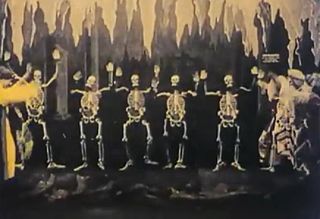
The Palace of the Arabian Nights is a 1905 silent fantasy film directed by Georges Méliès. The film, inspired by the One Thousand and One Nights, follows the adventures of a prince whose bravery and devotion are tested in a magical quest to win the hand of his beloved.
Desert Thunder is a 1998 action film, It uses stock footage from Iron Eagle and Navy Seals.
1001 Nights, also known as Sharaz or La esclava del paraíso, is a 1968 film directed by José María Elorrieta and starring Raf Vallone and Luciana Paluzzi.
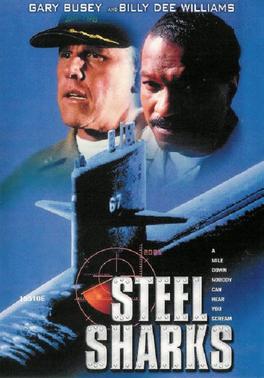
Steel Sharks is a 1997 American direct-to-video action film directed by Rodney McDonald and starring Gary Busey, Billy Dee Williams and Billy Warlock. It concerns a group of Navy SEALs who are captured and taken aboard an Iranian submarine from which they must escape to survive. The film was released straight-to-video. Several scenes involving Navy helicopter, ship, and command footage from this film were used in the production of Crash Dive, Freedom Strike, Counter Measures and Agent Red.
Arabs are portrayed in film as film characters in both Arab films as well as non-Arab films, and both Arabs and non-Arabs take the role of an Arab. These portrayals often depict an ethnocentric perception of Arabs rather than an authentic and realistic depiction of Arabic cultures, religions, dialects, as well as customs and traditions. Common characteristics that are implemented in the role of Arab characters include speaking in a heavy accent, being hostile and vicious, and are in the context of terrorism. Key issues that have been explored in these portrayals include how Arabs are identified in mainstream Hollywood film, how Arabs self-represent themselves in their own film, with examples from Egyptian cinema, Palestinian cinema, as well as Syrian cinema. This article will also cover the emphasis on Islamophobia and its impacts on film. There has also been the portrayal of Arab women in film, the portrayal of Arabs post 9/11, the portrayal of Arabs in silent film, and positive portrayals and negative portrayals of Arabs. Lastly, the United States efforts to avoid the stereotyping of Muslims/Arabs and shifting the focus onto a positive outlook.

Desert of Fire is a 1971 Italian adventure film directed by Renzo Merusi and starring Edwige Fenech, George Wang and Giuseppe Addobbati. The filming locations is in Tunisia.
References
- ↑ "Crime and Punishment: Criminal Justice". Reelbadarabs.com. Retrieved 2016-02-16.
- ↑ "Events | USC Center on Public Diplomacy". Uscpublicdiplomacy.org. 2007-06-20. Retrieved 2016-02-16.
- ↑ "American-Arab Anti-Discrimination Committee". ADC.org. Retrieved 2016-02-16.
- ↑ "Reel Bad Arabs: How Hollywood Vilifies a People (2006)". IMDb.com. Retrieved 2016-02-16.
- 1 2 "Reel Bad Arabs". Mediaed.org. Retrieved 2016-02-16.